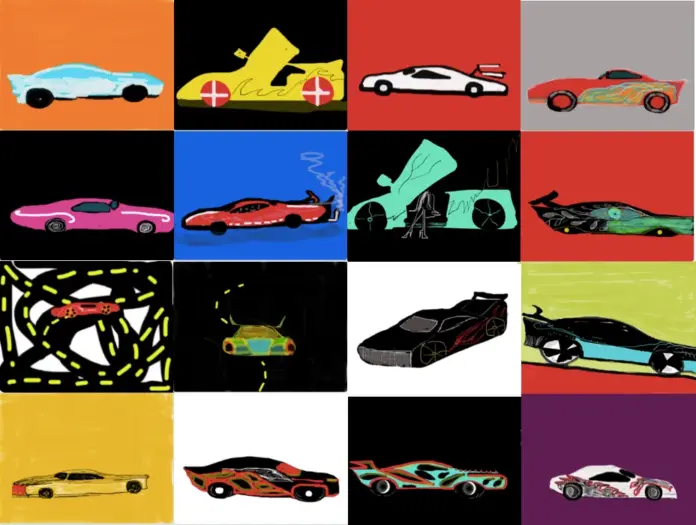
The Invisible Economy: Incentive Framework
DADA’s invisible economy is based on an incentive framework that is aligned with our values.
“
Economies are all about incentives. Incentives are what motivate people to act on their needs and desires. Extrinsic incentives like wages, awards, bonuses, promotions, or deadlines are imposed on a person from the outside. In contrast, intrinsic incentives come from our own internal drive to take action, our innate curiosity, or our desire to learn a new skill. We engage in the activity because performing the activity is its own reward.
We are currently transitioning from an industrial era ruled by extrinsic incentives, logic, and algorithmic work to an information era that requires new skills involving creativity and innovation, and that is ruled by intrinsic incentives and heuristic work.
The Invisible Economy creates the conditions to reward the inner motivations of people through a gamified system.
Gamification is the use of game mechanics in real life — the implementation of engaging incentives that motivate people to take action. Traditionally, gamification uses extrinsic rewards such as points, ratings, badges, and leaderboards to attract people and keep them engaged. It is used in every aspect of our lives, from frequent flyer miles and credit card rewards to customer reviews. But gamification can also be used to motivate people to act on their intrinsic needs and desires. In our platform, we designed our system to disincentivize competitiveness, status, and hierarchies. In DADA artists don’t level up; they earn colored dots as they make progress. There are no rankings and people can’t see how many followers they have.
When we first launched our drawing platform, anyone could reply to any drawing. But sometimes trolls would reply to a beautiful drawing with crude drawings meant to deface it. We implemented a very basic system that requires a minimum of points for people to be able to respond to drawings. Anyone can still participate but now it requires effort to earn the right to respond.
We don’t need to use negative tools like flagging or downvotes. Since we introduced the point system, those who want to deface DADA are instantly discouraged. Drawings that have not reached the number of points required to respond are not made public. Nobody sees them. Requiring a moderate amount of effort and commitment is an efficient way to neutralize trolls.
The Invisible Economy is organized around a complex, lifelong gamified system that aligns its incentives with the values of the community. Its gamification framework is composed of eight core behavioral drivers which we believe represent the main motivations for artists: Basic Income, Validation, Autonomy, Self-Expression, Greater Good, Creative Collaboration, Interdependence, and The Commons.
DADA’s Incentive Framework:
Positive motivators appeal to people’s sense of personal improvement or of a higher purpose, like drawing or being part of a new paradigm for the arts. Behavior and gamification expert Yu-kai Chou says that “If something is engaging because it lets you express your creativity, makes you feel successful through skill mastery, and gives you a higher sense of meaning, it makes users feel very good and powerful”. Conversely, negative motivators associated with extrinsic rewards like money and status can create obsessive, addictive, and gambling behaviors. People ultimately feel that they lose control of themselves. Online games like Candy Crush, casino slot machines, and art auctions all fall within this category.
Positive motivators, however, don’t drive a sense of urgency.
Many people may want to learn to draw but never get to it, or they may want to support the arts but leave it for later. In contrast, negative motivators make games achieve virality, and they drive up revenues.
But negative motivators can be used ethically to drive urgency when someone wants to do something positive but lacks the motivation. They don’t create negative feelings when used to encourage people to act on their own desires and pursue their passion. Goals imposed from the outside like deadlines or scores are detrimental, but goals set by oneself in order to achieve mastery are healthy. A combination of positive and negative motivators can incentivize people to draw more frequently, to start an art collection, to collaborate, to take creative risks, or contribute to the community.
By understanding the problems with free-markets and information networks we can change the outcome and design systems that incentivize people’s intrinsic motivations and result in a more equitable outcome.
“
Analysis – “It is nice to hear about designerly details in this specific economic model. Dada seems to be a platform or online community that is designed using different forms of motivation to incentivize their users’ decisions. I like how they aren’t overly positive about positive motivators, they point out that there are weaknesses and disadvantages to both negative and positive motivators. I also like the introduction, where they point out that extrinsic motivation is what led the industrial revolution, but that we have outgrown it. We no longer live in a world where it needs to serve us the same way, and that intrinsic motivator will treat us better.” – Easton Nguyen



